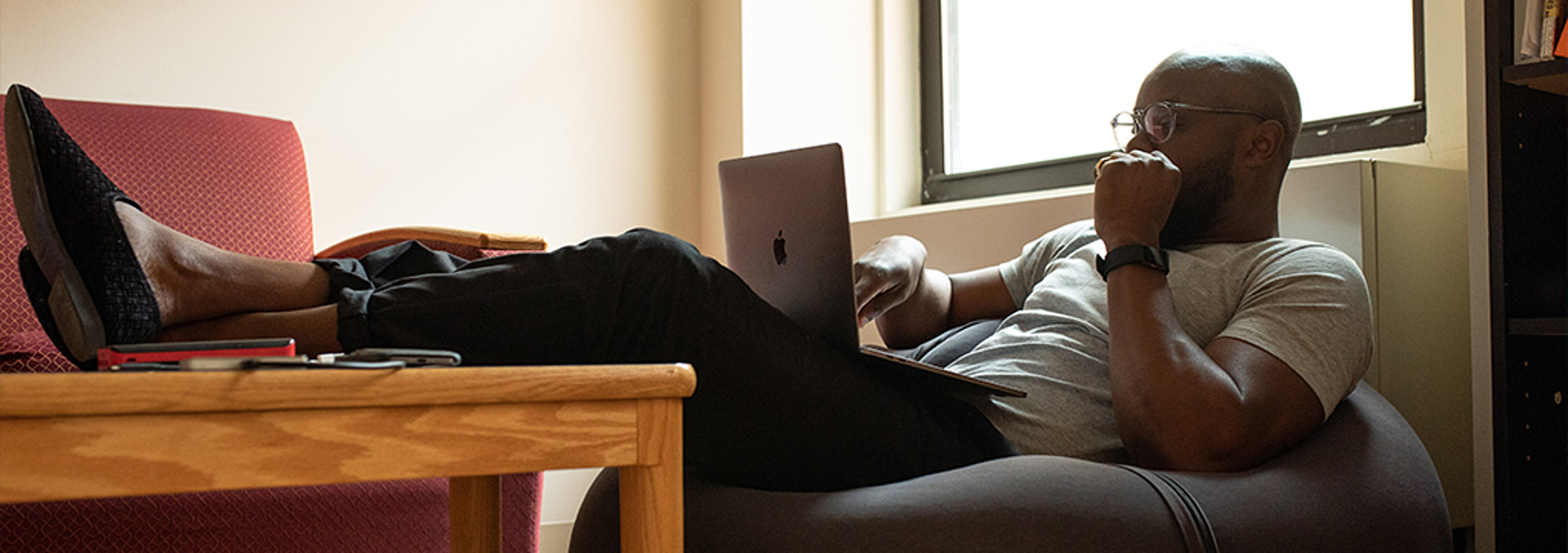On Our Minds

by Nakia James-Jenkins (she/her/hers)
“Going Remote” is a series of articles highlighting talent professionals from the On-Ramps community, as they discuss the adjustments they have made to their talent practices—and the subsequent outcomes—since shifting to a remote workforce during the coronavirus pandemic. We are thrilled to facilitate this knowledge share in the hopes that it will help organizations across the social sector during these challenging times. We encourage you to read the first and second articles of this series as well.
Nakia James-Jenkins is a partner at On-Ramps, overseeing the organization’s operations and talent practices.
Something I'm extremely proud of with On-Ramps is that we have always allowed for a remote workforce culture—even prior to the pandemic. Our staff has always been able to work remotely on Fridays, permitted there are no client or operational needs demanding otherwise that day. Employees are also able to take up to two hours off during the workday to take care of appointments or attend school functions for their children. Our culture is built around flexibility, making sure we support the whole person and not just the employee side of their life.
So when I think about the things we had to change going into a fully remote workforce, I’m thankful that our organization already had policies that allowed folks to manage their lives in a way that made them feel like active members of a community, rather than standalone employees of an organization. That said, we are taking particular measures to ensure our team members continue to have the flexibility they need.
Something we’re doing temporarily:
Adjusting our standard working hours
Our standard working hours are from 10:00 a.m to 6:00 p.m. Once we went fully remote, we recognized that everyone living and working at home all the time was not a situation that anyone was used to. We also recognized that this might require employees to support their family in a different way. So, we made it a point early on to say, “Please let us know if you need to adjust your work schedule.” If someone needs to be offline during the day, we ask them to identify the block of time and put it on their calendar. That way, our team members know not to schedule that person for a candidate screening or client call. By making that adjustment to our standard work hours, we’ve helped relieve a lot of stress.
Changes that we think will last:
Increasing communication and guidance around benefits
We have been very intentional about not only keeping folks updated on any changes to employee benefits, but also advising them on their selections. For example, most of us participated in our organization’s commuter transit plan. Once we went fully remote, we realized that we weren't sure when employees would next be able to tap into their plans, so we recommended that people reduce their monthly contributions. We also created a window where staff could either enroll in FSA or increase their current FSA contribution, after news came out that the CARES Act permanently reinstated over-the-counter products—including feminine products—as eligible expenses. This is the time where folks should be thinking more strategically about their finances, and we’ve been making an effort to over-communicate the opportunities when staff can make adjustments to their benefit plans. There has been a positive and appreciative response to that increase in communication, and I envision we’ll keep up that momentum beyond the pandemic.
Expanding our remote work policy
There was a time when our organization really believed—it's even written in our policy—that the community we built came out of the expectation that everyone be in the office as much as they could Monday through Thursday, with Friday being the optional day to work from home. That has been our way of thinking, that connection and engagement could only really happen in person. Now, we’re rethinking that outlook.
During the pandemic, we’ve seen every member of our staff successfully meet their usual deadlines and expectations while working remotely. We're already having conversations about how we expand our remote work policy. Are we ready to allow someone to request working three days remote and two days in the office? Are we ready to accommodate an employee that wants to work 100% remotely? I think we are open to having that conversation—especially with working parents. One of our partners shared with me during a check-in that they have no desire to travel to work every day, because being home with their daughter for longer periods of time has been such a gift.
As a leadership team, we are really keen on determining whether it’s necessary for someone to have to commute to work in order to be successful in their role. Working remotely is definitely one of the policies that we know will be adjusted going forward. What I find interesting, and a bit disappointing, is that we probably would not have been so keen on adjusting it universally—as we are planning to do so—if COVID-19 had not happened.
The Takeaway
Although I'm very sad that it took a pandemic for this to happen, I'm excited to see leadership teams thinking more deeply about how they see people, and what biases have existed in their hiring practices. There is a reason why organizations have believed that people have to physically come to work in order to work: trust. There are hidden trust questions that most leaders have never been forced to answer—Why must your team function in the office? Does this have to be the way you work?—until now. I’m proud that On-Ramps’s leadership team has been operating through a much more empathetic lens than we've ever done before. I hope we hold on to that spirit and really think through decisions in a way that's driven not only by the bottom line, but by the impact on our people.





